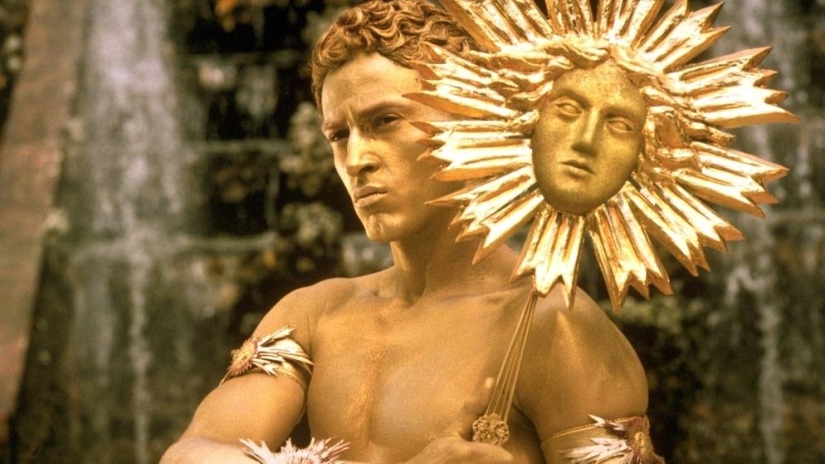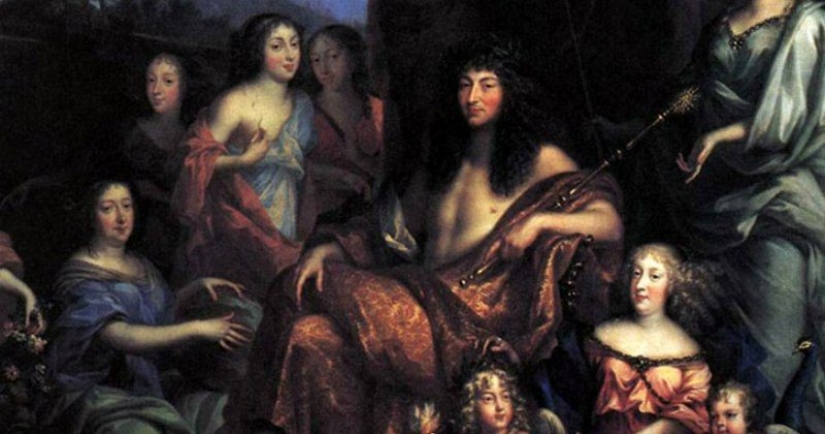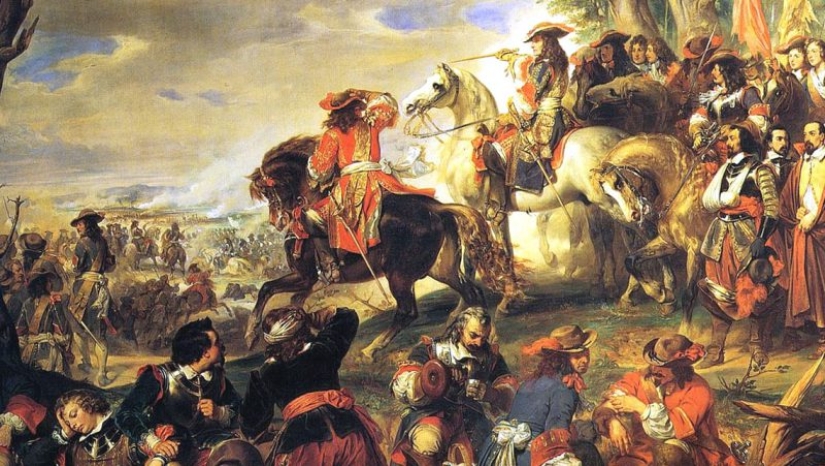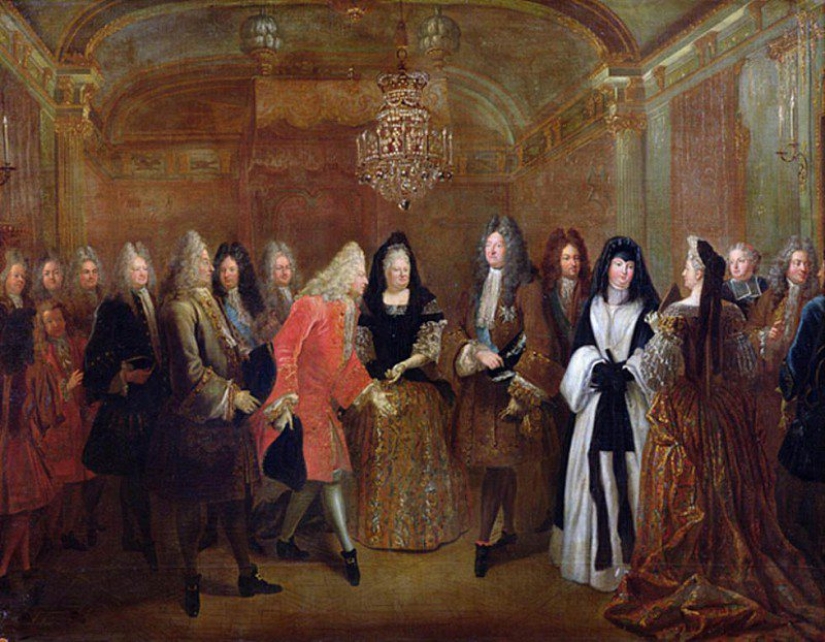Louis XIV: The God-given Sun King who ruined France
Categories: Celebrities | Europe | History | World
By Pictolic https://pictolic.com/article/louis-xiv-the-god-given-sun-king-who-ruined-france.htmlLouis XIV de Bourbon, who was named Louis the God-given at birth, will forever remain in history as the most luxurious European monarch. Contemporaries believed, not without reason, that he brought the concepts of wealth and splendor to an absolutely new level, previously unknown to mankind.
The sun King was sure all his life that his main task was to demonstrate the power and wealth of France and he coped with it perfectly, regardless of the real situation in the country.

King Louis XIV sat on the throne for the longest time in the history of Europe — 72 years of power was granted to him by fate. It is no exaggeration to say that this was the longest holiday, the memory of which has been preserved by history. The king managed to arrange a ball or a theatrical performance even near the battlefield, and his retinue had to be ready to entertain the monarch at any time of the day.

English diplomats, visiting Versailles, described the residence of Louis in this way:
It is quite likely that this was said by envy, since the same Englishmen considered the palace in Paris is the most luxurious and comfortable royal residence in Europe. We must pay tribute to the king that he was incredibly active and creative, taking part in all projects that his powerful hand could reach.
 Louis XIV designed buildings, fountains, gardens and flower beds, developed sketches of medals and coins, created sketches of clothes, participated in the publication of books, engravings and geographical atlases, and much more. At the same time, the king did not suffer at all from false modesty and willingly perpetuated his person wherever it was possible.
Louis XIV designed buildings, fountains, gardens and flower beds, developed sketches of medals and coins, created sketches of clothes, participated in the publication of books, engravings and geographical atlases, and much more. At the same time, the king did not suffer at all from false modesty and willingly perpetuated his person wherever it was possible.
Another passion of the king was collecting everything that is possible. In his palaces there were huge collections of minerals, antique cameos, cups and vases made of jasper and agate. The sun king was particularly admired by the medals, not only ancient, but also modern, minted by his own order. No monarch of the Old World left behind as many medals, orders, badges and badges as the God-given Louis.
The exhibits were particularly good and pretentious and this infuriated a powerful collector. The country that dared to release more spectacular trinkets was immediately declared war. It is not known for sure whether this is true or fiction, but the war actually took place, and the most experienced diplomats found it difficult to name its reasons.

Even while on a military campaign, the king did not stop the construction and improvement of the Palace of Versailles. Couriers constantly scurried between the theater of military operations and the monarch's Paris residence, reporting to the king about all the details of the grandiose construction and passing his valuable instructions to the builders.
Versailles turned out to be so magnificent that Louis himself once admitted that the palace exceeded his wildest expectations. In Europe, there was nothing like this either in scale or in the value of the finish. The palace became a worthy frame for balls and performances, to which the French king was so fond.
One of the many guests of Versailles recalled the following about his stay at the palace:
 The mirror Gallery of the palace was the largest exhibition of paintings and sculptures in Europe, the vast majority of which depicted the sun king. There were concerts and dance evenings, as well as fashion shows.
The mirror Gallery of the palace was the largest exhibition of paintings and sculptures in Europe, the vast majority of which depicted the sun king. There were concerts and dance evenings, as well as fashion shows.

King Louis himself sparkled with gold and precious stones-he was imitated by fashionistas, and other kings tried to keep up with the standard of the style of the XVII century in the richness of camisoles and jewelry. It is to Louis XIV that Paris owes the fact that it became the capital of world fashion. The king's favorite, Madame de Montespan, at that time was the main model. One of her outfits — a dress made of gold brocade, covered with lace, in which she went out during the reception of ambassadors, became the most popular item of women's wardrobe of the century.
The court of Louis consisted of several thousand people, competing with each other in wealth and sophistication of dresses. Contemporaries argued that appearing at court twice in the same attire was a sign of bad taste, so the courtiers spent huge sums on dresses and jewelry every year.

Ordinary Parisians also tried to imitate the Royal Court. To the best of their abilities, the townspeople sewed clothes similar to the outfits of the courtiers and adopted the manners of the royal entourage. One of the signs of high status in the era of Louis XIV was a luxurious carriage drawn by a large number of horses. In an effort to match, many Frenchmen spent entire fortunes on the maintenance of carriages, stables and footmen in gold-embroidered liveries.
The French furnished their houses with expensive furniture and ordered hundreds of camisoles and dresses. The military was also no exception — every royal Musketeer had to have at his disposal a light gray suit made of English cloth, a double-breasted brocade doublet, suede culottes and several pairs of thin leather gloves trimmed with lace. All this was not included in the royal allowance and had to be purchased for their own money.

But even the most expensive wardrobe was not an unconditional pass to high society. To be admitted to the court, it was necessary to have refined manners and be able to dance beautifully. Ludovic was a great connoisseur of ballet and participated in productions himself. The king liked to portray the celestials, for example, Apollo or Zeus, and also always played the role of a celestial luminary. The king's career as a dancer was long — Louis danced in performances for more than 20 years.

On all holidays, the king cordially invited envoys from other countries — they demonstrated the wealth, cordiality and refinement of the king and his entourage. At that time, it was a kind of diplomatic move designed to show the country from the best side and give foreign guests the opportunity to express their admiration for Louis and his talents.
The king was always surrounded by beautiful women — Louis was a connoisseur of the fair sex and real tragedies were played out between noble ladies in the struggle for his attention. If we talk about the king's love-making, then he could not be called a hardened womanizer. In the XVII century, many representatives of the nobility had to deal with hundreds of mistresses during their lives, while the monarch had connections with only a few dozen ladies.
 The Marquise de Montespan, the official favorite of the king in the period from 1667 to 1683, the mother of his seven children
The Marquise de Montespan, the official favorite of the king in the period from 1667 to 1683, the mother of his seven children
The monarch had several favorites at the same time, who performed the role of housewives at all social events. The queen, Maria Theresa of Spain, was considered a boring woman and could not cope with these duties. The main favorite of the king is the Marquise de Montespan, for a passion for luxury, was called "sultana". During the trips, her carriage, drawn by six horses, was accompanied by a retinue of 45 people.
 The lifestyle of Louis XIV and his court could not but affect the economic situation in the kingdom. The budget of France was melting like snow under the spring sun and by the end of the reign of Louis the God-given, the country was completely ruined. The ruler's love of wealth and wars exhausted the state, but the sun king realized this too late. His last words were: "I loved war and palaces too much."
The lifestyle of Louis XIV and his court could not but affect the economic situation in the kingdom. The budget of France was melting like snow under the spring sun and by the end of the reign of Louis the God-given, the country was completely ruined. The ruler's love of wealth and wars exhausted the state, but the sun king realized this too late. His last words were: "I loved war and palaces too much."
Keywords: Ball | Versailles | Gold | King | Servants | Luxury | France
Post News ArticleRecent articles

Most of us think that the color of the eggshell does not play any role and it is possible not to pay attention. But it's not and ...

The more we rely on technology, the more potential power hackers gain over us. It doesn't matter if their goal is to help or cause ...
Related articles

King Louis XIV of France, whom the courtiers called the "Sun King", is a very popular person in literature and cinema. We know this ...

You will hardly remember how you looked the wife of the king of France Louis XVI Marie Antoinette, 18th century. But we can ...

Islam — it is the religion of enjoining the believers to adhere strictly to certain rules and rituals. Most of them are ...

Creating a good portrait is one of the most difficult tasks for any photographer. In order to make a really natural and memorable ...